Introduction
In a world where efficiency is paramount, keystroke automation emerges as a transformative solution for organizations seeking to streamline operations and enhance productivity. By automating repetitive tasks that once consumed valuable time and resources, businesses can empower their teams to focus on strategic initiatives that drive growth. This article delves into the multifaceted benefits of keystroke automation, exploring its applications across various industries and the challenges organizations may face during implementation.
With the rise of advanced technologies like Robotic Process Automation (RPA) and artificial intelligence, the future of keystroke automation promises even greater innovations, enabling companies to remain competitive in an ever-evolving landscape. Discover how embracing these solutions can not only alleviate operational burdens but also foster a more engaged and motivated workforce.
Defining Keystroke Automation: An Overview
Keystroke mechanization is a powerful instrument that employs software to streamline repetitive activities involving keyboard inputs. By imitating human typing and mouse actions, this technology performs activities without manual involvement, effectively optimizing procedures such as data entry and form completion.
As an essential component of Robotic Process Automation (RPA), keystroke control plays a vital role in improving operational efficiency and tackling workplace issues such as:
- Repetition fatigue
- Staffing shortages
- Obsolete systems
With innovative solutions like EMMA RPA and Microsoft Power Automate, organizations can significantly reduce human error and empower their teams to focus on more strategic, value-adding work, thereby boosting employee morale and overall productivity. By leveraging these tools, businesses can transform their operations, ensuring they remain competitive in a rapidly evolving landscape.
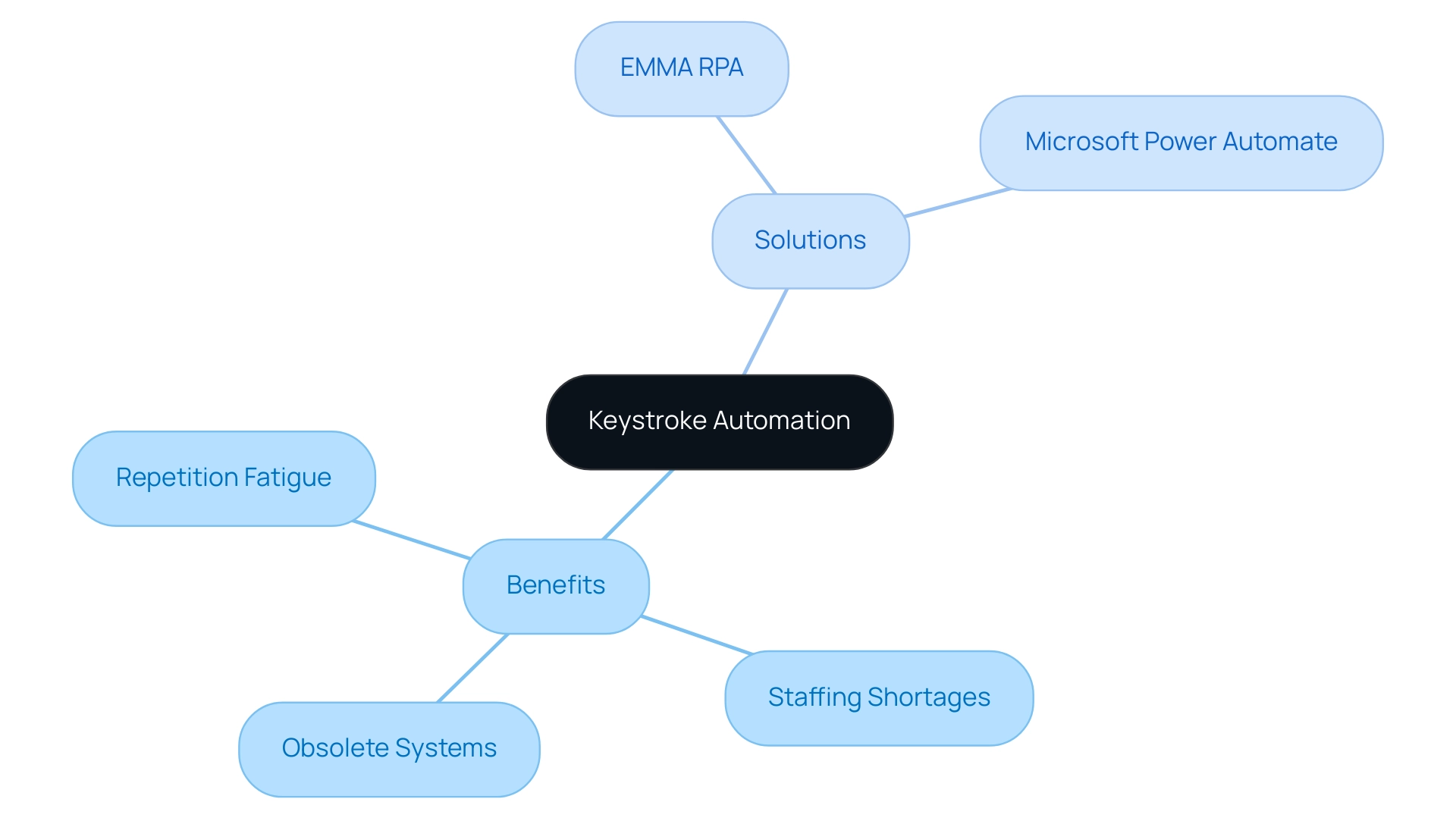
The Benefits of Keystroke Automation in Everyday Tasks
The implementation of GUI operation, as shown in our recent case study, provides numerous advantages that significantly change everyday tasks. Not only does it dramatically reduce the time spent on repetitive activities, allowing employees to focus on more strategic initiatives, but it also enhances operational efficiency in critical sectors like healthcare.
For instance, automating data entry has proven to save hours each week, leading to a remarkable increase in productivity, with a reported 70% reduction in data entry errors. Furthermore, GUI control reduces the risk of human error, ensuring data accuracy and reliability—an essential factor in industries where precision is paramount.
The challenges of manual data entry mistakes and sluggish software testing encountered by the mid-sized company were effectively tackled through mechanization. By freeing team members from mundane tasks, organizations can cultivate a more engaging work environment that encourages creativity and innovation.
Overall, the advantages of GUI systems, alongside Robotic Process Automation (RPA), which contributed to an 80% improvement in workflow efficiency, not only streamline operations but also empower a more efficient and motivated workforce, ultimately driving informed decision-making through better insights.
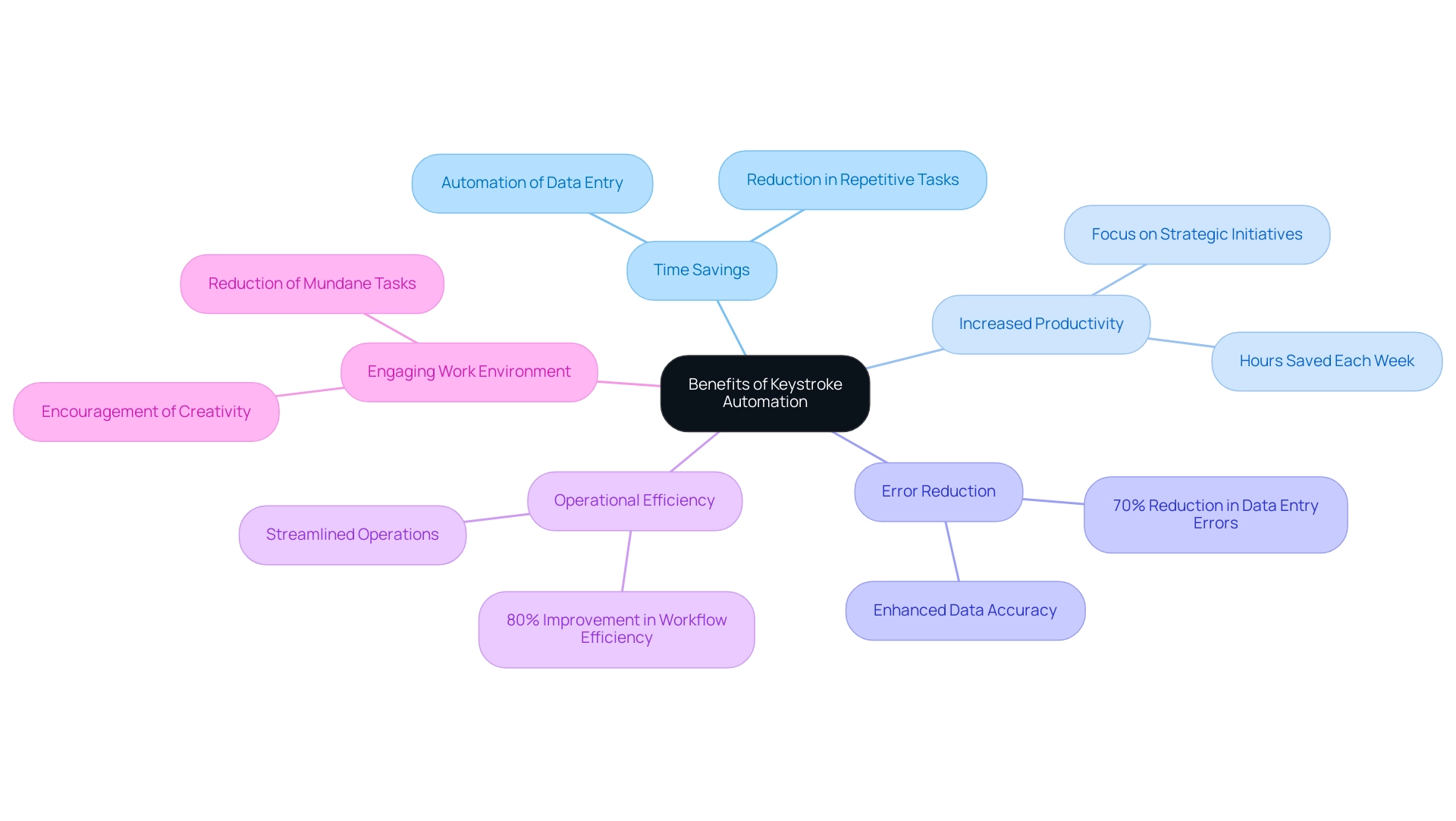
Common Applications of Keystroke Automation
Keystroke control can be utilized in various situations across different sectors to tackle workplace challenges effectively. For instance, in data entry, organizations can automate the transfer of information from emails to databases, significantly reducing the time required for manual input and alleviating employee frustration.
In customer support, input streamlining simplifies ticketing systems by automatically entering customer information based on prior interactions, improving service efficiency. Furthermore, in financial services, typing assistance streamlines the handling of transactions and reporting, enabling quicker turnaround times.
Outdated systems can hinder these processes, causing inefficiencies and errors that impact overall productivity. By recognizing particular repetitive and time-intensive activities, organizations can customize input processes to update their operations and address their distinct operational requirements.
This not only boosts productivity but also helps attract and retain valuable talent in an increasingly competitive landscape, as employees are less burdened by mundane tasks and can focus on more strategic work.
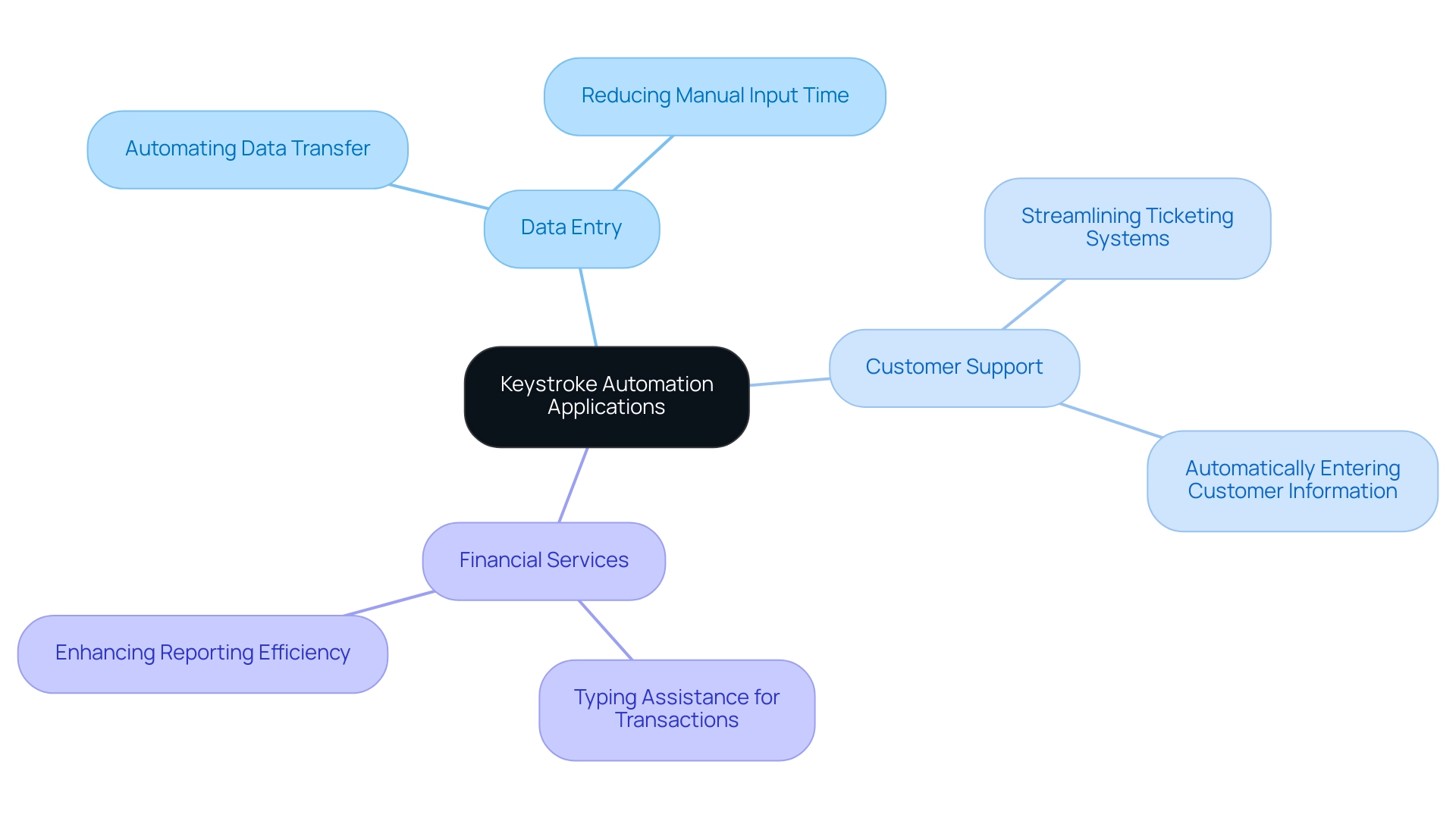
Challenges and Considerations in Implementing Keystroke Automation
While keystroke programming offers significant advantages, organizations may encounter challenges during implementation. Common issues include:
- Employee resistance stemming from fears of job displacement or reluctance to adapt to new technologies.
To effectively address these concerns, it is vital to cultivate a culture of collaboration and communication, emphasizing that technological advancements are designed to enhance job roles, not replace them. Organizations can leverage our GenAI workshops to provide hands-on training, ensuring employees are equipped to utilize AI-powered tools effectively.
Furthermore, selecting software that smoothly integrates with current systems is essential. For example, implementing RPA can streamline workflows by automating repetitive tasks, thereby enhancing operational efficiency.
By proactively addressing these challenges and utilizing our tailored GPT creation services, organizations can enable a smoother transition to RPA and GUI processes, ultimately enhancing productivity.
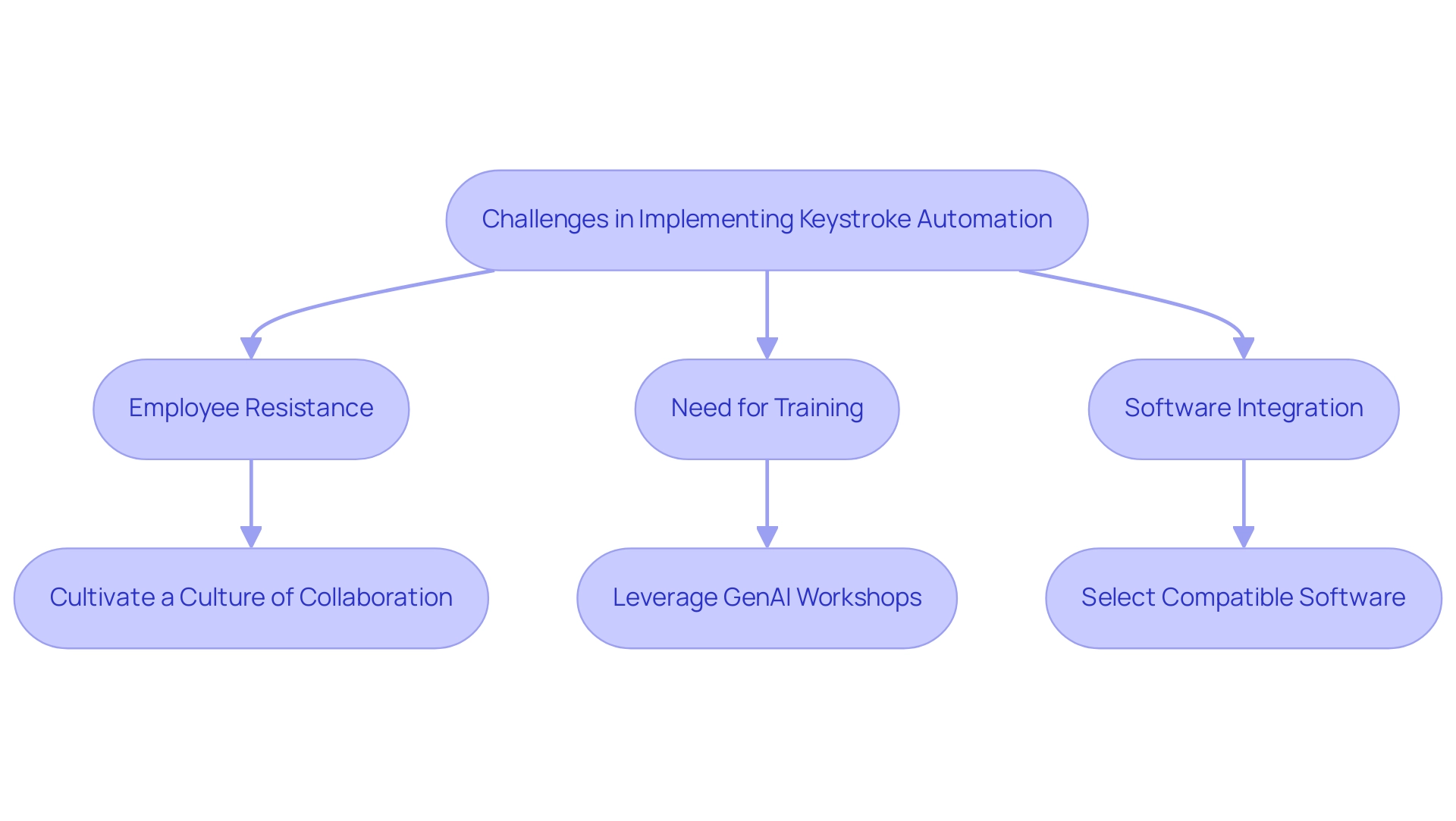
Future Trends in Keystroke Automation
The future of keystroke efficiency is poised for significant advancements as technology continues to evolve. Emerging trends, such as the integration of Robotic Process Automation (RPA), artificial intelligence, and machine learning, are set to enhance the capabilities of robotic tools.
For instance, AI-driven systems can learn from user behavior to optimize processes further, making them more intuitive and efficient. This is particularly valuable in today’s data-rich environment, where extracting actionable insights is crucial for informed decision-making.
RPA not only streamlines workflows but also reduces errors, allowing teams to focus on more strategic, value-adding tasks. Furthermore, as organizations progressively embrace remote work models, the demand for solutions that support virtual environments will expand.
This shift will drive innovation in keystroke technology, allowing for more seamless integration with cloud-based applications and remote workflows. By leveraging RPA and utilizing Business Intelligence to transform raw data into actionable insights, organizations can position themselves to fully harness the potential of automation in the future, enhancing operational efficiency and driving productivity.
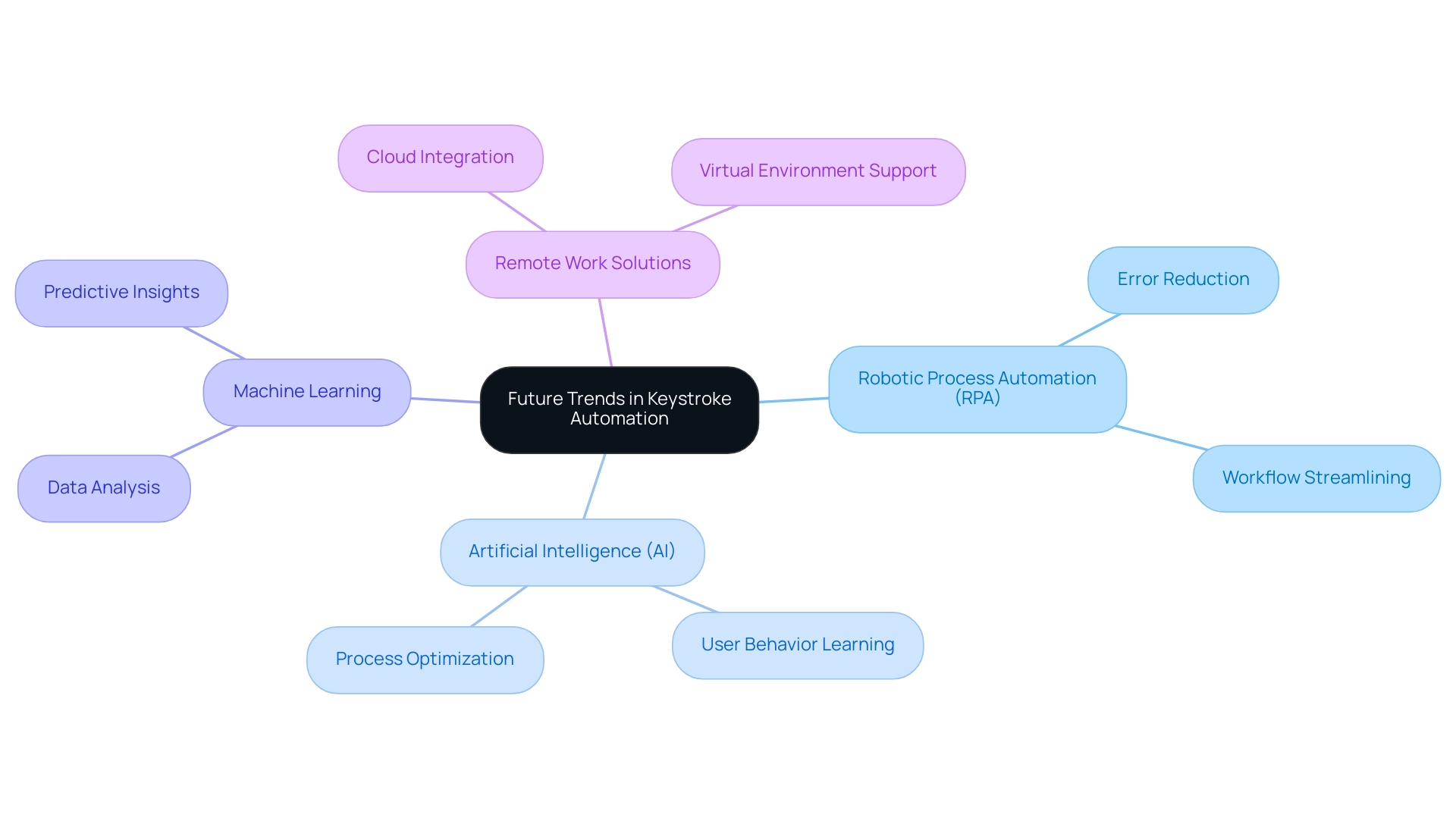
Conclusion
Embracing keystroke automation is a strategic decision that can profoundly transform organizational operations. By automating repetitive tasks, businesses not only improve efficiency but also empower their workforce to engage in more strategic and fulfilling work. The benefits are clear: from significantly reducing data entry errors to enhancing productivity across various sectors, keystroke automation is a powerful ally in the quest for operational excellence.
However, it is essential to navigate the challenges of implementation with care. Addressing employee concerns and ensuring seamless integration with existing systems are critical steps in fostering a culture that embraces automation. By investing in training and communication, organizations can alleviate fears and demonstrate that automation serves to enhance roles rather than replace them.
Looking ahead, the future of keystroke automation is bright, driven by advancements in artificial intelligence and machine learning. These technologies promise to refine automation processes, making them even more effective and intuitive. As businesses adapt to changing work environments and seek innovative solutions, keystroke automation will play an integral role in maintaining competitiveness and achieving sustainable growth.
By prioritizing these advancements, organizations can unlock new levels of productivity and operational efficiency, setting the stage for success in an increasingly dynamic landscape.

